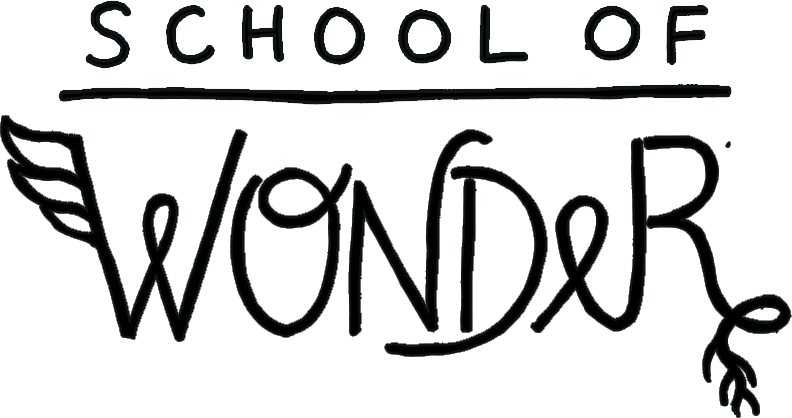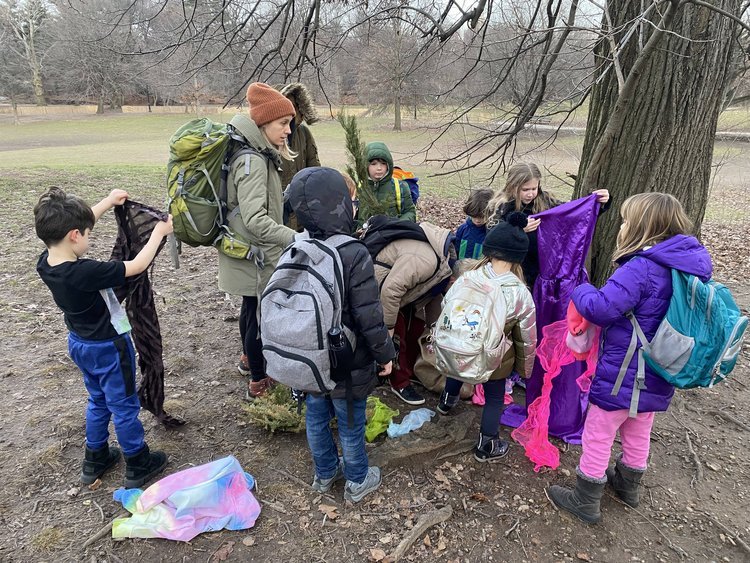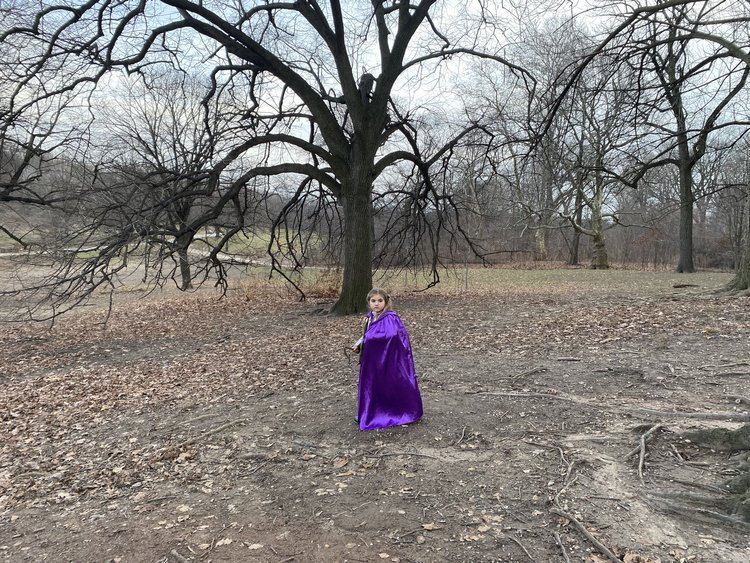On Being Wonder-Smitten with Maria Popova
Listening in WOnder
Essayist, poet, and wonderer Maria Popova speaks at the New York Society for Ethical Culture in Manhattan, and School of Wonder reports back on what we learned.
It’s a January Friday morning in Manhattan, and Wonder Magicians Alli, Marta, and myself (Stacey) take our seats in the auditorium of the New York Society for Ethical Culture. We await the arrival of Maria Popova, keynote speaker for the event organized by Creative Mornings, a face-to-face community that brings together creatives from around the world to share space and think together.
Maria, someone often described as a “wonderer,” centers wonder frequently in her writing, especially in her beloved and acclaimed Sunday newsletter, the Marginalian (formerly Brain Pickings). A core way she explores wonder is by exploring nature: nature as both a space to receive and experience wonder and as a medium through which we can understand wonder. In one of her weekly newsletters from the fall of 2018, Maria describes a visit to the National Museum of Natural History in Washington D.C. She found herself in the on-going Objects of Wonder exhibition, where, she remembers:
“a splendid embodiment of [Walt] Whitman’s admiration of the character of trees stopped me up short: a display of slides revealing the cellular structure of trees and shrubs seen under a microscope — stunning images that occupy the lacuna between art and science, resembling ancient tapestries and Klimt paintings and galactic constellations.”
Just like School of Wonder, Maria Popova is interested in the way wonder comes to life in nature, the way art and science intertwine in specular beauty, and how the way forward is to observe and honor this wonder, both on our own and in community with others.
A photo taken following the Creative Mornings event, as the Wonder Magicians wandered into Central Park for a mid-morning stroll.
The topic for the keynote has—up until the point of arrival—maintained a mystique about it, since the Eventbrite description for the event included only two additional words next to Maria’s name:
“MARIA POPOVA: ON SANCTUARY”
To the surprise and pleasure of the Wonder Magicians in attendance, Maria opens by saying how central “wonder” is to her process of being in communication with the world and the earth, as both a writer and a human being; by saying how central wonder is to finding sanctuary:
“if sanctuary is to be found in wonder, it requires … it demands a kind of un-selfing, that liminal space between knowledge and mystery, between prize, the space between our strengths and vulnerabilities where true openness and receptivity can happen … because only then can we become wonder-smitten by reality, because only then can we begin to love the world more fully.”
Maria also includes the original, old English definition for wonder — wondrian:
“TO BE ASTONISHED IN THE PRESENCE OF THE BEAUTIFUL AND THE SUBLIME”
She follows the definition with an example of magic she recently felt produced by wonder. One autumn day, she was sitting outside in a friend’s backyard and notices a tiny red lead spinning, as if in thin air. But once the sunlight shifted and revealed a thin spider’s web as the lever for the dangling leaf, she learned the machinery behind the miracle was rooted in reason, not magic. But, Maria says, when discovering this:
“the magic was not diminished, it was magnified because I was overcome by the sense, this feeling tone for the interconnectedness of all of it.”
Hearing this story, I think back to the Wednesday that had just passed, to the first After School Wednesday of the winter season. I think about a moment when the Wonder Kids found a sack of costumes hidden in Prospect Park (earlier in the day by a Wonder Magician). They followed a map given to them by Gaia, the Goddess of Mother Nature, and upon finding the costumes, they dressed up together to then make the voyage back to the After School home base near Litchfield Villa. At this point, many of the Wonder Kids have come to deduce that Gaia, whether real or imaginary, is supported by the Wonder Magicians, who hide treasures like the sack and give them maps and clues. But like Maria says in her keynote, we notice that the magic of Gaia is felt beyond just mystery but also the possibility for magic felt by interconnectedness, play and wonder. Sitting in the auditorium, I think about the joy it is to be a facilitator for these moments of wonder, to be a messenger for the beautiful words of Maria Popova in the every day work of School of Wonder.
As a decade-long follower of Maria Popova, her words have seeped into my understanding of the world around me, guiding me towards questions and beauty in ways I have never thought to quantify how exactly she has impacted the work I do or the way I live. But on this day, being in her presence alongside my colleagues of the School of Wonder, a quantifiable detail became clear to me as the event came to a close: I have sought out spaces and people that embody the brain pickings of wonderers like Maria, and that seeking has brought me to the School of Wonder, a embodiment of the art of imagining, executing, and learning through a lens of wonder.
What has always spoken to me about Maria’s writing is that she very infrequently writes from a place of instruction, but rather a place of wonder. She uses words and the page as a template to wonder out loud, and as readers, we simply interact with that wonder. On our best days, that is what we do at the School of Wonder. We hope to preserve children’s natural wonder by creating a space where mystery can transform into interconnectedness and into stewardship, a space, like Maria says, between our strengths and vulnerabilities where true openness and receptivity can happen. We hope through School of Wonder, sanctuary can be found for all those who participate.





